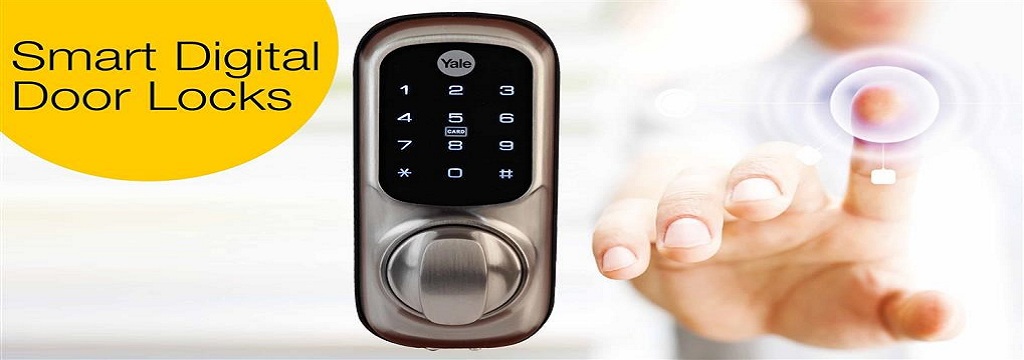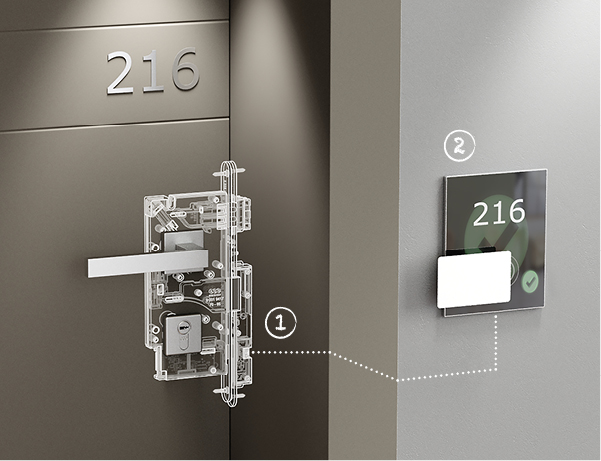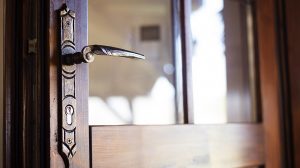Those times of breaking the key in the door, or waiting outside because we lost the key, or running home to open it for visiting relatives, will remain as stories "from our times". Soon we will all be able to use digital locks. Access will be gained by using a code to open or close the door, and it can be changed whenever we want so that those who have learned the code can't gain access to the house. With modern technology and Wi-Fi connectivity, the phone can be used as a key. Locking and unlocking could be operated remotely from anywhere in the world or by transmitting an access code valid for a limited time to others. Digital solutions are present in all areas, it would be hard to miss them here. They are already being used in crowded public spaces or in hotels and it won't be long before they become commonplace.

Digital locks are programmable, keyless locks that can be used to secure any area of the home, from the garage to the front door or office. They are now mainly used in places where a access control you can rely on and where the use of normal keys is impractical due to the large number of people coming and going. They can be fitted to any kind of door - wooden, aluminum, glass or PVC. The important thing is to match the level of security provided by the door. It is pointless to fit a high-performance lock on a simple door with average or even low resistance.
Advantages and disadvantages of digital locks
The demand for electronic and smart locking systems has increased lately because access to a premises is becoming much simpler and quicker for those who have permission to enter, but much more difficult for the unwelcome. Entering a home is reduced to pressing a button, typing in a code or sending a code from a mobile phone.
Every digital door lock has advantages and disadvantages, just like standard locks. Here are some of them:
- Advantages
- Ability to change codes often for greater security
- No possibility of losing the key as with a standard lock
- Automatic locking function on most locks so there is no possibility of "forgetting" the unlocked door
- It is not necessary to carry the key continuously.
- Disadvantages
- Battery or electronic locks become useless without electricity
- Spare key locks can be broken or attacked
- Some electronic locks are not outdoor resistant.
Types of digital locks
Digital locks can be categorized in different ways, depending on what they need to open, how they are connected to the home or how they work.
Locks that can also be opened with a normal key. These locks use a keypad in combination with a standard key or a digital key. The door can be opened either by entering the code or by using the key. They are ideal in cases where there are multiple users or where users are more accustomed to using keys, or for frequent travelers who allow a neighbor temporary access. In the latter case there is also the possibility that the neighbor can be given an access code that will be changed when the owner returns home. But there are disadvantages: they can be locked and are easier to open.
Locks with batteries. One of the most common ways of operating locks is by using batteries. Battery operated door locks usually have an LCD display that lights up when touched. They are easy to reprogram using a master code. Their main disadvantage is that the batteries have to be changed once a year. If the battery is discharged, the keyboard won't work. Most locks, however, have a way to warn you if the battery is about to run completely flat. Battery-operated locks are mainly used indoors and, in most cases, also have a key release option.
Mechanical digital locks. These are locks that do not depend on a battery or electricity to operate. Instead, they rely on a special part like a standard key to unlock the door. Mechanical locks are resistant to knocks and do not wear out even with heavy use. Their disadvantage is the limited number of codes that can be used to both lock and unlock. These locks are mainly used for outdoor use in high traffic areas where resistance to heavy use is a must.
Alarm locks. Alarm locks emit a loud signal if the wrong code is entered more than once or if an attempt is made to break them. They may be connected to the home alarm system or have their own alarm system that works exclusively on the locks. They are almost always connected directly to the home's electrical system. They do not run on batteries because loss of power can make them inoperable.
Fingerprint locks. For those who don't want to carry a key or remember an opening code, consider a fingerprint lock. Fingerprint locks scan your fingerprint to unlock the door without the need for a key or code. They are among the most expensive digital locks. They are, however, sensitive to the outdoors and may need weather protection.

source: agb.it
Installing and programming digital locks
Mechanical or battery-powered digital locks install almost identically to a standard lock. They are sized so that they can be adapted to any locking method without requiring any modifications to the system or to the door or frame. Alarm or electric locks must be installed by either the manufacturer or a licensed electrician. Alarmed locks may need a special alarm box installed on the wall next to the door.
All locks are sold with a master code that allows programming. Most allow up to six different codes used simultaneously on a single lock. There are also special locks that allow unlimited codes. Almost all mechanical locks allow codes between one and six digits, while battery-operated and alarm locks can have longer codes. For mechanical locks, customization is also possible. In this case longer codes can be used.
Digital door locks are, along with window security systems, an innovative way to help keep our home safe. Whether you opt for a mechanical version or an alarmed lock that communicates directly with your home's alarm system, a digital door lock comes with more options so you can find peace of mind in home security.






























Add comment